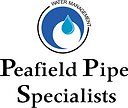When it comes to ensuring the safety and reliability of critical equipment, hydrostatic pressure testing stands as a cornerstone procedure in various industries, including oil and gas, construction, and manufacturing. Whether it’s a pipeline, a pressure vessel, or a storage tank, the integrity of these systems is paramount, and hydrostatic pressure testing is a vital tool to verify their strength and durability. In this article, we will explore the best practices for hydrostatic pressure testing, highlighting the key steps, safety measures, and considerations that professionals should follow to achieve optimal results.
Understanding Hydrostatic Pressure Testing
Before diving into best practices, let’s take a moment to understand what hydrostatic pressure testing is and why it’s crucial. Hydrostatic pressure testing is a non-destructive method used to assess the strength and integrity of pressure vessels, pipelines, and other containment systems. It involves filling the system with a liquid, typically water, and pressurizing it to a level that exceeds the operating pressure. This test evaluates how well the equipment can withstand the stress of internal pressure and identifies potential weaknesses or defects.
Best Practices for Hydrostatic Pressure Testing
Detailed Planning and Documentation: The foundation of any successful hydrostatic pressure test is meticulous planning. Engineers and technicians should develop a comprehensive test plan that includes all relevant details, such as test pressure, duration, equipment to be tested, and safety precautions. Additionally, thorough documentation of the testing process, including records of pre-test inspections and post-test results, is essential for traceability and compliance.
Selecting the Right Test Medium: While water is the most common test medium, it’s crucial to consider the compatibility of the test medium with the equipment being tested. Some materials may react with water, so alternative test fluids may be necessary. Always consult with materials and corrosion experts if there are any doubts.
Safety First: Safety should be the top priority during hydrostatic pressure testing. Ensure that the testing area is clear of personnel not involved in the test, and establish clear safety protocols, including emergency response procedures. Protective gear such as safety glasses, gloves, and hearing protection should be worn as necessary. Adequate ventilation is also critical, especially when testing in confined spaces.
Equipment Calibration and Inspection: Before commencing the test, calibrate and inspect all equipment, including pressure gauges, relief valves, and pumps. Ensuring the accuracy of these instruments is crucial for obtaining reliable test results. Any damaged or malfunctioning equipment should be repaired or replaced promptly.
Gradual Pressure Increase: When pressurizing the system, it’s essential to do so gradually. Rapid pressure increases can create shockwaves that may damage the equipment. Gradual pressure increments also allow for better leak detection and help identify potential issues before reaching the test pressure.
Hold Time: Once the test pressure is reached, it’s vital to maintain it for a specified hold time. The hold time allows for the observation of any pressure drop, which can indicate leaks or weaknesses in the system. Industry standards typically dictate the required hold time, but it’s essential to follow the specific requirements of the equipment being tested.
Monitoring and Inspection: During the test, continuously monitor pressure gauges and instrumentation. Visual inspection of the equipment is also crucial. Look for any signs of leakage, distortion, or deformation. Regularly check for pressure fluctuations, as these can be indicators of potential issues.
Leak Detection: Leak detection is a critical aspect of hydrostatic pressure testing. Various methods, such as soap bubble testing or using leak detection solutions, can be employed to identify even the smallest leaks. Technicians should be trained in these techniques and follow the manufacturer’s recommendations for leak detection.
Post-Test Inspection and Documentation: After completing the test, perform a thorough post-test inspection. This should include verifying that the equipment returned to its original shape and dimensions and checking for any residual stress. Record all test results and observations accurately for future reference and analysis.
Disposal of Test Medium: Properly dispose of the test medium after the test is complete. Depending on the nature of the fluid used, it may need to be treated or disposed of in accordance with environmental regulations.
Challenges and Considerations
While following these best practices is essential for a successful hydrostatic pressure test, there are several challenges and considerations to keep in mind:
Environmental Impact: The disposal of test fluids, especially if they are contaminated during the test, can have environmental implications. It’s crucial to comply with environmental regulations and minimize the impact on the surrounding environment.
Safety of Personnel: The safety of personnel involved in the test is paramount. Adequate training and strict adherence to safety protocols are essential to prevent accidents and injuries.
Material Compatibility: Consider the compatibility of the test medium with the material of the equipment being tested. Corrosion or other chemical reactions can occur if the materials are not compatible.
Pressure Relief: Always incorporate pressure relief mechanisms, such as relief valves, to prevent overpressurization and potential catastrophic failure during the test.
In conclusion, hydrostatic pressure testing is a fundamental procedure for ensuring the safety and reliability of critical equipment in various industries. By following best practices, adhering to safety protocols, and considering the unique challenges of each test, professionals can confidently assess the integrity of pressure vessels, pipelines, and other containment systems. Remember that each test may have specific requirements, so it’s essential to consult relevant industry standards and guidelines while maintaining a commitment to safety and precision in every hydrostatic pressure test.
